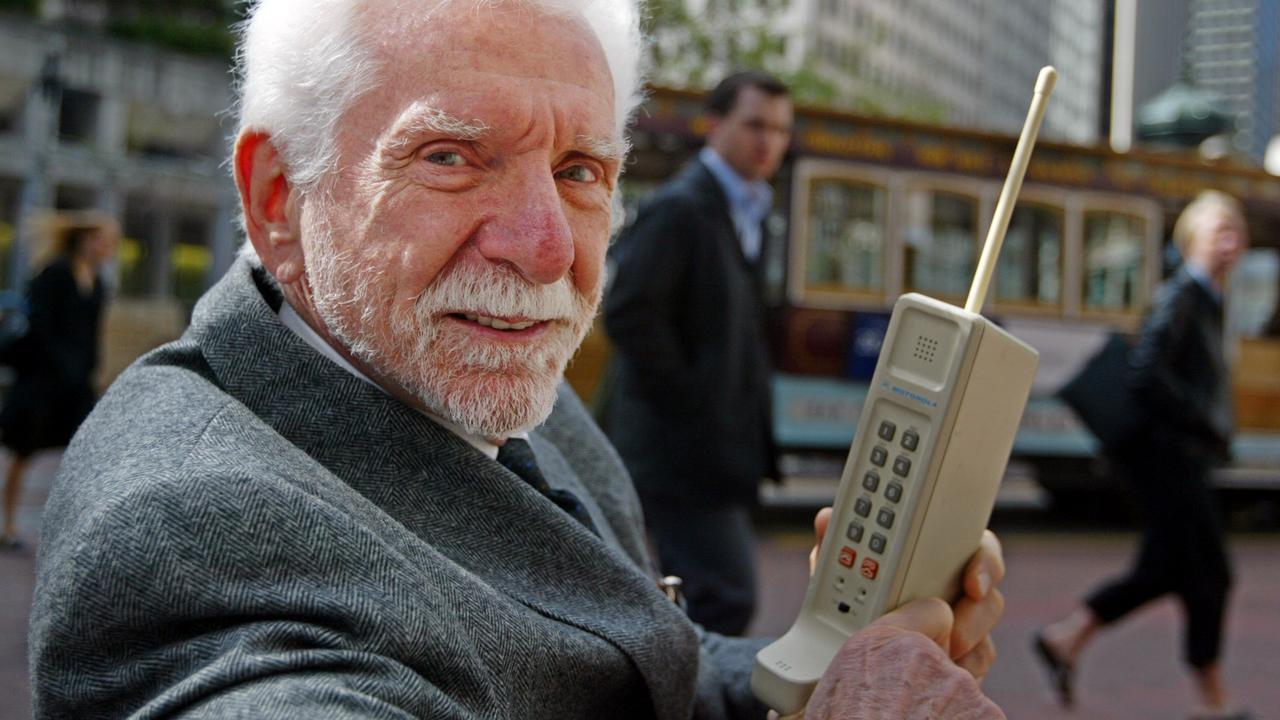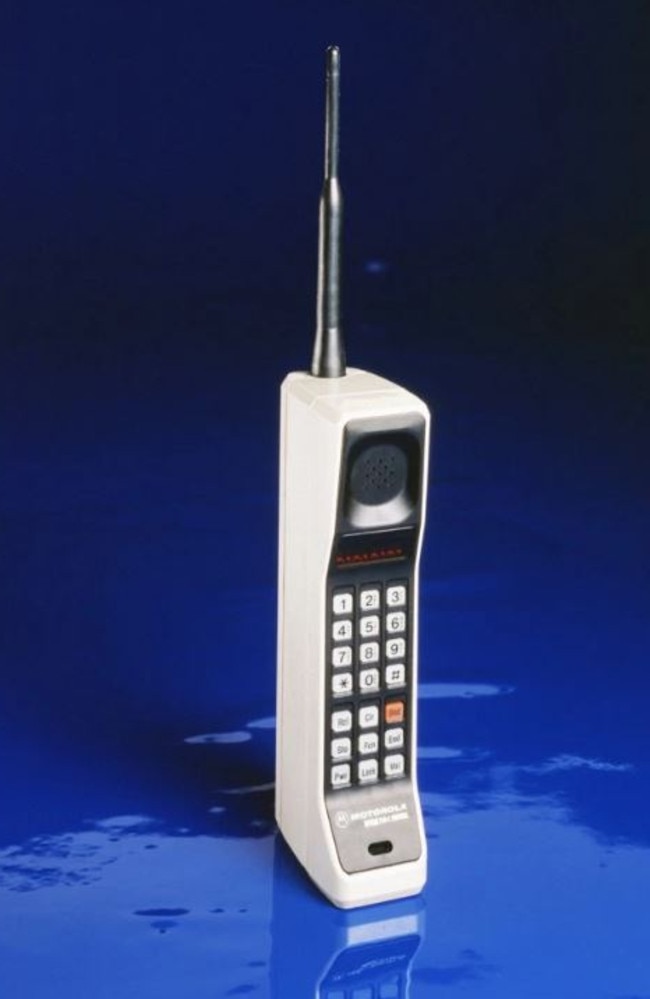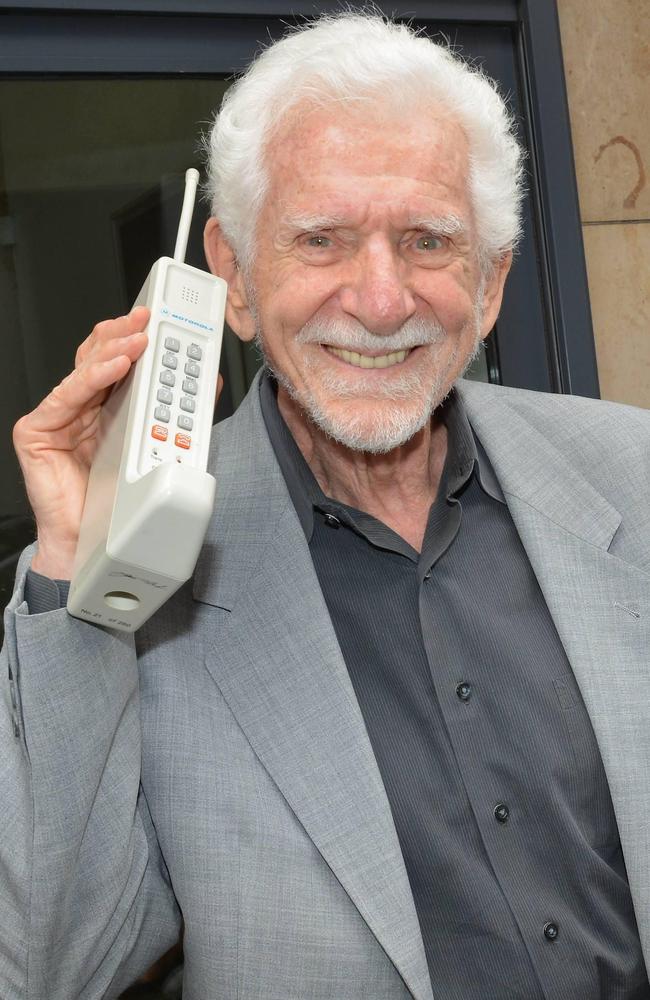Inside story of the world’s first mobile phone call
It’s almost 50 years since a Motorola engineer dialled the first handheld mobile phone and made a call. The call went down in history.

Motorola engineer Martin Cooper had little idea how much he was changing the world when he stood on sixth avenue almost five decades ago in New York City on April 3, 1973 and made the first call on a handheld mobile phone.
That very first call was made 46 years ago, and the beige chunky phone was nicknamed “the brick” for obvious reasons.
Cooper used the phone to call a rival, Joel S. Engel, from Bell Labs, so he could lightheartedly rub in the news. Bell Labs had initially envisioned the technology to support handheld mobile phones as early as 1946, so Cooper thought it’d be a fun idea to phone Mr Engel and gloat.
“Joel, I’m calling you from a cellular phone, a real cellular phone, a handheld, portable, real cellular phone,” Cooper said.
It wasn’t said to be the most scintillating conversation, but it was historic, nonetheless. Mr Cooper recently told CNN he kept the call very brief.
“I don’t remember exactly what he said, but it was really quiet for a while. My assumption was that he was grinding his teeth. He was very polite and ended the call,” Cooper said.
Cooper’s short phone call was a major step forward in the development of mobile technology. But it’d be another 10 years for mobile phones to overtake landlines in terms of usage and change our lives forever.
RELATED: The grotesque story of the Second Fleet
RELATED: Mary Queen of Scots: Inside her gruesome beheading
RELATED: Paris attacks: Woman fakes being victim, jailed for fraud

THE EARLY YEARS
The race to manufacture the first portable phone began in the mid-1940s when Bell Labs engineer Doug Ring wrote an internal memo, outlining his ideas for a network of phones that were completely mobile.
Their closest rival, the American Telephone & Telegraph Company (AT & T), focused on car phones; early versions required a huge amount of equipment in the boot, as well as a nearby tower. Motorola was working on more mobile tools that were inspired by a request from Chicago police officers who wanted a mobile phone to talk to each other when they were patrolling the streets.
AT & T produced the very first mobile phones in 1946, but their usage was limited to cars due to the large amount of power needed to run them. So, back then, they weren’t actually portable phones, they were simply car phones.
By 1947, the AT & T engineers discovered that by using small cells, or a range of service area, with frequent reuse they could greatly increase the traffic capacity of mobile phones. The major challenge back then was the technology to achieve this didn’t exist.
It wasn’t until 1968 when the US Federal Communications Commission asked AT & T to come up with a plan to use a portion of the UHF (ultrahigh frequency) television band to create a truly portable phone. AT & T proposed using a cellular architecture to expand its car-phone service to all mobile phones.

THE RACE TO MAKE THE FIRST MOBILE PHONE
Things started to get political when Motorola made moves to prevent AT & T from having a monopoly on mobile phones. That’s when Cooper was given the job of developing the first mobile phone. He was seen as the perfect man for the job because he had been determined to give people the ability to talk on the phone away from their cars. His vision of a personal wireless handheld phone was inspired by Star Trek and seeing Captain Kirk use his communicator.
Star Trek was said to have inspired other inventors: Ed Roberts invented the first home computer and named it “Altair 8800” after the Altair Solar System in a Star Trek episode that inspired him.
Cooper spent three months building a prototype for a portable, mobile phone, eventually creating the DynaTAC (Dynamic Adaptive Total Area Coverage) phone, which was 23cm tall and weighed 1.1kg.
The battery would give you approximately 20-30 minutes of usage before it needed charging. Motorola’s mobile phone wasn’t commercially sold for another 10 years. But, as Cooper demonstrated during his gloating phone call to his rival on the streets of New York, it actually worked. (It took about 10 hours to recharge the phone).
Motorola was relatively new to the industry and mostly known for manufacturing two-way radios. But now they’d managed to one-up one of the biggest telecommunications companies in the world.
Cooper told CNN the initial reaction was enormous.
“It was beyond imagination that more than half the people in the world would have these phones. But people were absolutely amazed by the fact that you could hold the phone up to your ear, walk around and make a phone call.
“Remember, there were not even any cordless phones at that time. We had a press conference (in 1973) and I handed the phone to this young lady journalist and told her to make a phone call.
“She said, ‘Can I call my mother in Australia?’ and I said, ‘Sure!’ And she did that … Sophisticated New Yorkers were standing there with their mouths open.”
Motorola management was so thrilled with Cooper’s mobile phone concept they invested more than $100 million between 1973 and 1993, well before any revenues were realised.
Then, in 1980, Motorola created a promotional video on the possibilities of personal mobile phones. The video makes the brick look almost stylish. In a way.
THOSE BIG CHUNKY PHONES
On September 21, 1983, Motorola made history when they produced the world’s first commercial portable cell phone. It cost consumers a whopping $US3995 at the time. A large part of that first phone consisted of the battery, which weighed four or five times more than the entire phone.
The next challenge was to adapt the small infrastructure, used for car phones at the time, to support mobile phone calls.
Cooper told CNN: “The challenge was to create the network with the promise at that time that we only needed three megahertz of spectrum, the equivalent of five TV channels to cover the world.”
One thing Cooper didn’t envisage was the addition of apps and cameras, let alone touchscreen technology.
“I must tell you as much as we were dreamers, we never imagined that all these things could be combined into one, and I’m really not so sure that it’s a great thing,” he said.
“Phones have gotten so complicated, so hard to use, that you wonder if this is designed for real people or for engineers.”
Cooper, who’s now aged 90, has said his dream that everyone would have access to their own mobile phone has surpassed his wildest expectations.
“In fact, we had a joke that said, in the future, when you were born you would be assigned a telephone number, and if you didn’t answer the phone, you were dead.”
LJ Charleston is a freelance historical journalist. Continue the conversation @LJCharleston



